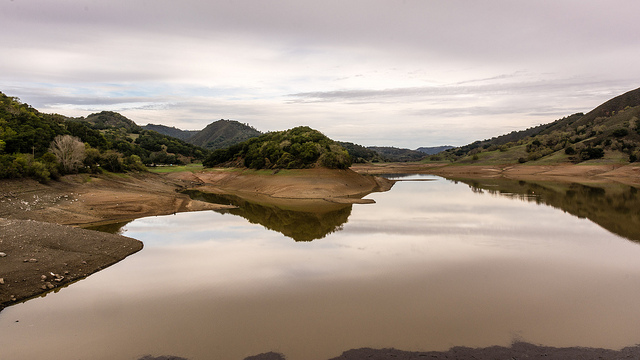Conservation and the California Water Crisis
The state of California is currently experiencing one of the worst droughts on record. While this drought is now entering its fourth year, 2014 has been particularly devastating with over 80% of the state considered to be in “extreme” or “exceptional” drought conditions.. The situation has become so dire, Governor Jerry Brown declared a state of emergency in January, enacting several conservation efforts to help lessen the effects of the drought on the state’s population and economy. Industry, agriculture, public water supplies, and wildlife are all at extreme risk as the drought deepens.
A Compounding Problem
With no sign of the drought breaking anytime soon, California is faced with few options as the water crisis continues. To make up for the depleted snowpacks and dwindling lakes and rivers, the state has increasingly turned to groundwater to meet its enormous water needs. Groundwater typically provides around 40% of the state’s water needs in normal years, however the drought has caused this to rise to nearly 60%. To make matters worse, the lack of rainfall means these aquifers are not only being overly taxed, but they risk being depleted completely. Generally, the water removed from the ground is replaced by rainfall. However, without any water to recharge these precious reservoirs, the water table drops lower and lower until they are gone. In addition, with no regulation on groundwater usage, many farmers are simply using the water under their land to irrigate their crops with little or no limitations.
To make matters worse, the effects of the drought are magnified by the state’s aging infrastructure. Broken and leaky pipes are contributing to the water crisis by leaking billions of gallons of water into the ground. In the Bay Area alone, over 23 billion gallons of water are lost each year due to water leaks from an aging water system. While the slow water leaks from these pipes are certainly significant, the broken infrastructure often displays its age in more dramatic fashion. On July 29th, a small water leak culminated in a burst trunk line under Sunset Boulevard in LA, wasting over 20 million gallons of water in one day alone.
Deferred maintenance of the state’s infrastructure has never been more costly, and the price is only increasing. With many pipes in LA reaching almost 100 years old, the city estimates a $15 billion price tag to fix the problem. While updating the state’s infrastructure would definitely help slow the pace of water loss, it may not be enough to stop it entirely. In addition to aging infrastructure, water leaks are also commonly the result of earthquakes. A recent earthquake in Napa resulted in over 83 burst waterlines, along with disruption of gas and electrical services. Water leaks are an inevitable problem for any large water supplier. To combat this problem, advanced leak detection techniques and equipment, including infrared sensing and ground penetrating radar, can be used to locate problem areas and target maintenance efforts before the problem becomes too severe.
The Importance and Effectiveness of Conservation
With California facing a major threat to its water supply from multiple fronts, what is left for the state to do to combat this crisis? With no end in sight for drought conditions, the ever dwindling supply of groundwater, and the constant threat of water leaks, the state and citizens of California must rely on strict water conservation practices to endure. Fortunately, these efforts have already begun to pay off. Conservation programs in urban areas have already reduced water usage by 7.5% over the previous year. While declaring a state of emergency in January, Governor Brown set a goal to reduce overall water consumption in the state by 20 percent. Current conservation efforts include restrictions on outdoor water use for private homes, removal of turf from commercial properties, and limitations on irrigation. In addition to these efforts, the Department of Water Resources has emphasized the importance of water leak prevention and detection as a form of conservation. While the state’s infrastructure may need replacing, the implementation of water leak detection technology can help dramatically reduce the cost by identifying problem areas much quicker than before.




